Audiofilas › Forums › Audiofilo akademija › Elektronika › Kambario akustikos gerinimas su Accuphase DG-68
Tagged: ACCUPHASE DG 68
- This topic has 13 replies, 2 voices, and was last updated April 4, 2023 at 20:26 by
 Belas.
Belas.
-
AuthorPosts
-
December 19, 2022 at 23:17 #9079
Good afternoon,
my system consists of n1 P7300 -A75-C2850-DP750 from Accuphase. To improve the system I wanted to add DG68.
I’m having trouble understanding if it can handle n2 amplifiers, how should they be connected?
A thousand thanks.-
This topic was modified 1 year, 7 months ago by
 Belas.
Belas.
December 20, 2022 at 22:41 #9097I expect you are asking how to connect Accuphase DG-68 Voicing Equalizer.
Your list of equipment allows you to use different speaker connection schemes. Without a block diagram, it is difficult to answer precisely, but the principle of connecting the DG-68 does not change – the device must be connected into a low signal line.
I’d like to recommend to use digital connection DG-68 in a line between CD player DP-750 and C-2850 preamplifier as indicated in manufacturer documentation: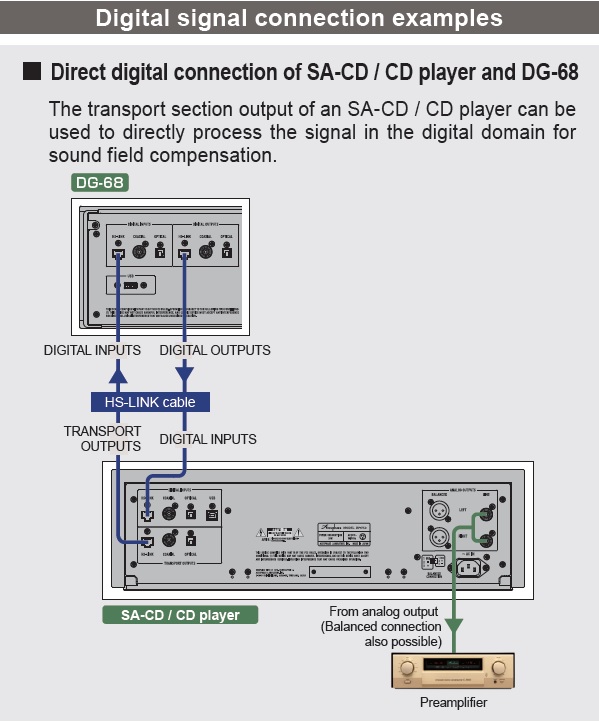
Then the signal from C-2850 output is fed in the same way as you do without using DG-68.
If you like to use analog connection, then you can use XLR or RCA cables to attach DG-68 voicing equalizer between CD player and preamp:
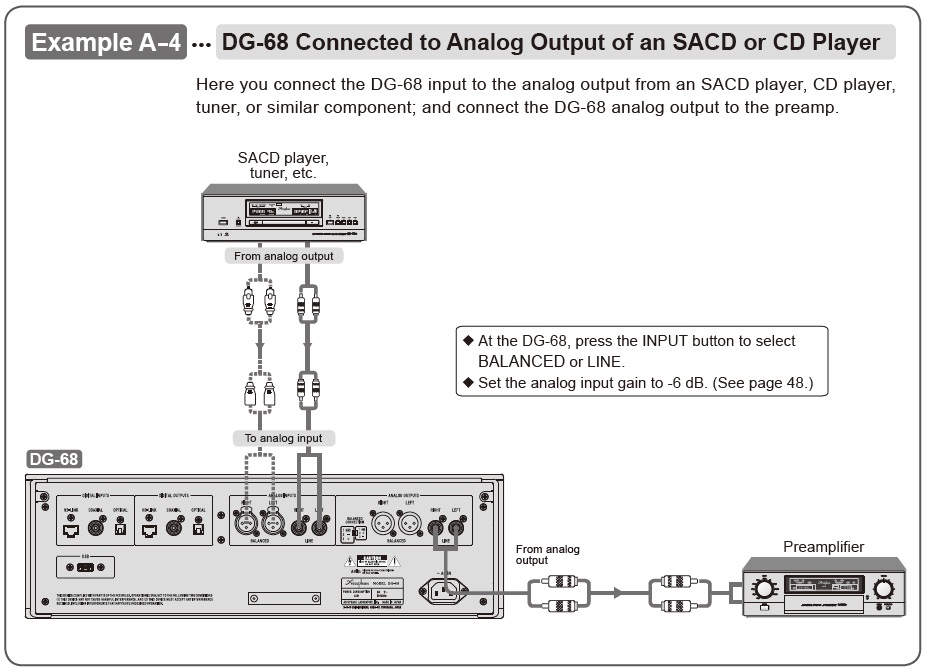
Or between preamp output and power amps as shown in such a diagram:
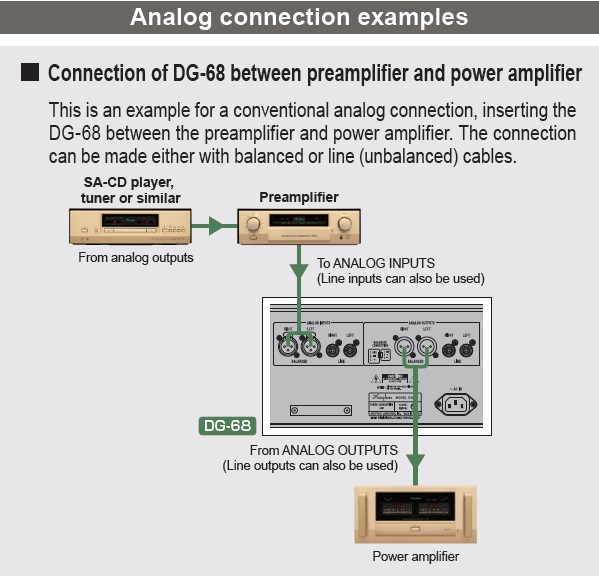
In this situation, the connection of your power amplifiers also remains as it was without the use of DG-68.
If the answer does not suit you, please describe in more detail your intention for using P-7300 and A-75 power amps.
-
This reply was modified 1 year, 7 months ago by
 Belas.
Belas.
December 21, 2022 at 17:50 #9106December 21, 2022 at 21:03 #9113This is so called “passive bi-amping” structure and you can use such a connection:
1. DP-750 -> DG-68 -> C-2850.

2. One RCA output from C-2850 to P-7300 (LF module), the other output from preamp to A-75 (HF module).

-
This reply was modified 1 year, 7 months ago by
 Belas.
Belas.
December 21, 2022 at 23:23 #9119December 22, 2022 at 10:10 #9126In your picture active audio system. This structure is the best, cause let us to avoid degradation of passive filters, to achieve maximum damping and highest efficiency.
A few notes around your picture:
– in an active system passive filters must be removed;
– if the speaker modules are acoustically tuned, then no signal delay is needed and an analog crossover can be used;
– DG-68 can improve the sound at the hot spot at the expense of deterioration in other areas of the room. So, I’d like to recommend to improve the acoustic properties of the room and disconnect DG-68.For decades, I have been using analog active systems of the following structure:
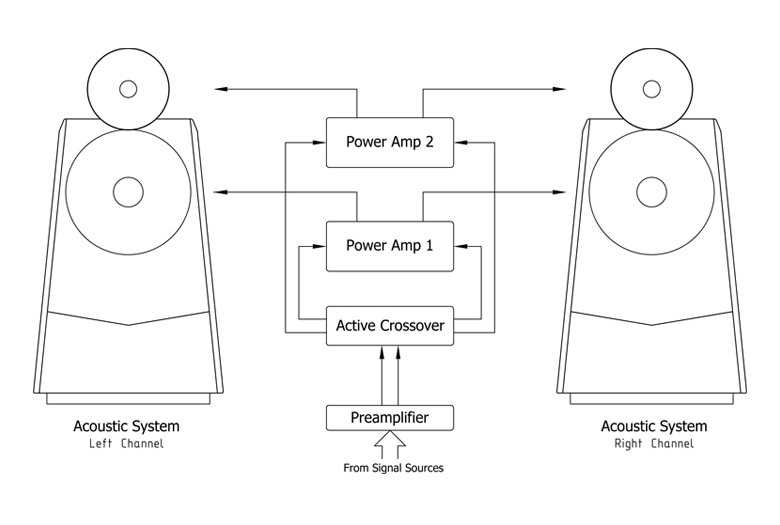
In the photo bellow my experiments with DG-48. Today I listen to the music without any EQ.
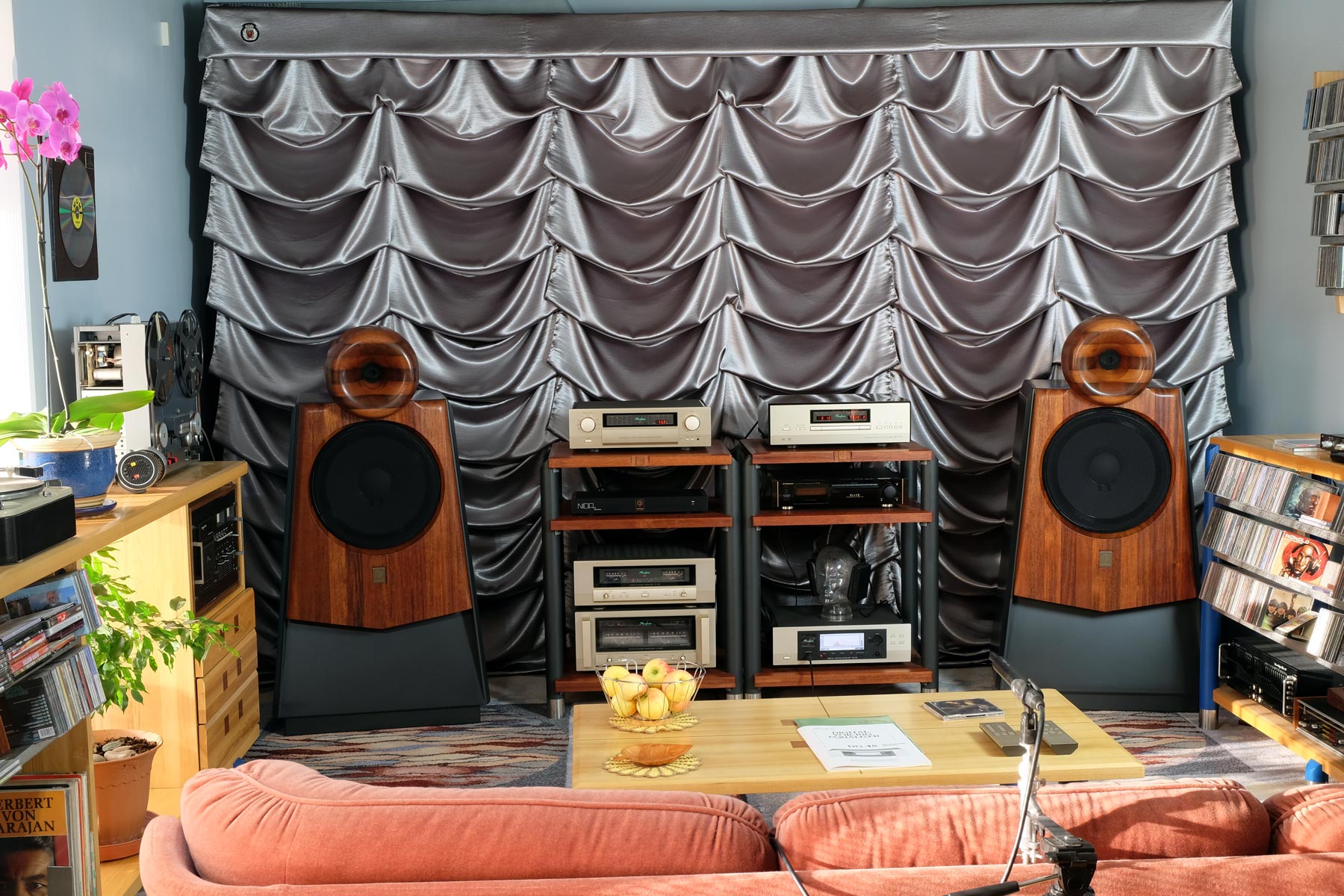
-
This reply was modified 1 year, 7 months ago by
 Belas.
Belas.
December 22, 2022 at 14:06 #9131Unfortunately I can’t eliminate the passive filters, for better sound should I buy the DG 68 or the DF 65? Thank you.
-
This reply was modified 1 year, 7 months ago by
 Belas.
Belas.
December 23, 2022 at 12:10 #9134Active topology is the step into best sound quality, which you can draw from loudspeakers. It’s a “quality”, not “quantity” way as is with DG-type or other room equalizer equipment.
The main goal for an active system is to avoid any reactive components in the signal path from the amplifier output to the speaker coil. If you leave passive crossovers in the speakers, then it will not be an “active” audio system at all.
Switching from passive to active is not difficult – you need to turn off the crossover or short it so that the signal from the speaker terminal goes directly to the speakers.
If you are using multi-way loudspeakers, then a semi-active structure can be used; low and mid/high frequencies are served by an active 2-way crossover, and mid-high are served by a regular passive crossover of multi-way loudspeakers.
It can be mentioned that two-way high sensitivity systems are the area of use for active audio systems. There in FB group you can see some nice pictures.
The list of advantages in favour of active crossovers and multi-amplification you may find in the book – Loudspeakers For Music Recording and Reproduction by Philip Newell and Keith Holland or there.
-
This reply was modified 1 year, 7 months ago by
 Belas.
Belas.
December 23, 2022 at 15:01 #9141
<i class=”fa fa-file-text”></i> il cremonese Documento di Microsoft Word
I am attaching the image of my loudspeakers, unfortunately I cannot eliminate the passive filters. To improve the sound scene, with the A75-p7330 power amp, should I take THE DG68 OR THE DF 65 or both?
-
This reply was modified 1 year, 7 months ago by
 Belas.
Belas.
December 23, 2022 at 21:23 #9147I very like active structure. If you do not can/want to remove passive crossovers, then I’d not to recommend to buy expensive DF-65. From other hand, if you trust in active structure, then DF-65 can be used in any other your sound system at the future. I’m talking, that you can win quality of sound with semi-active SF Cremonese. Low frequency and Mid frequency passive filters must be disconnected, and MF-HF filters stay passive.
If about DG-68, then would be fine to know more about acoustic treatment of your room. In any case I’d like to start with room acoustic and the last bits (some decibels) shall be arrange with Voicing EQ.
-
This reply was modified 1 year, 7 months ago by
 Belas.
Belas.
-
This topic was modified 1 year, 7 months ago by
-
AuthorPosts
- You must be logged in to reply to this topic.







